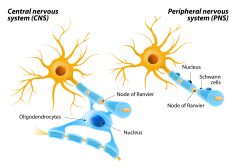Definition
noun
A ligature done in between the sinus venosus and the atrium or around the atrioventricular junction of an animal heart (i.e. frog or turtle heart) to demonstrate that the cardiac impulse conduction is from the sinus venosus to atria to ventricle although the successive chambers possess automaticity, which means each may continue to beat although the atria will have a slower rate than the sinus venosus and the ventricle may or may not beat at a slower rate than the atria.1
Supplement
Stannius ligature is a procedure named after Hermann Friedrich Stannius, a German anatomist and physiologist. In 1852, he conducted an experiment on the heart of the frog. He placed a ligature between the sinus venosus and the atrium of the frog’s heart. It was the first stannius ligature. He also put a ligature around the atrioventricular groove (second stannius ligature). With this experimental procedure, Stannius was able to demonstrate the cardiac impulses being conducted from the sinus venosus to the atria and then to the ventricle. His findings implicate the independent and spontaneous rhythms of the muscle tissues of atria and ventricles. Furthermore, it demonstrated that the pacemaker of the heartbeat is the sinus.
See also:
- sinus venosus
- atrium
- heart
- impulse
- conduction
Reference(s):
1 Stannius ligature. (n.d.) Farlex Partner Medical Dictionary. (2012). Retrieved April 27 2015 from http://medical-dictionary.thefreedictionary.com/Stannius+ligature







